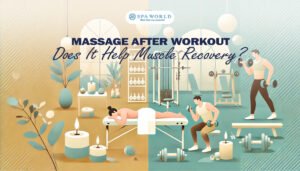Saunas and cold plunges have gained popularity as recovery methods in recent years. Both offer unique benefits for muscle recovery, stress relief, and overall well-being, but which one is right for your health?
Let’s delve into the specifics of both to help you make an informed decision.
| Feature |
Sauna |
Cold Plunge |
| Primary Benefits | Increased blood flow, muscle relaxation, stress reduction | Reduced inflammation, improved circulation, mental clarity |
| Common Techniques | Dry saunas, wet saunas, infrared saunas | Ice baths, cold plunge pools |
| Suitability | Generally suitable for most people, but consult a healthcare professional if you have certain conditions (e.g., heart conditions, high blood pressure) | Not recommended for individuals with certain health conditions (e.g., Raynaud’s disease) |
| Potential Side Effects | Dehydration, dizziness, overheating | Shivering, discomfort, increased heart rate |
Understanding Post-Workout Recovery
Recovery is an essential part of any fitness plan. When we exercise, we cause tiny tears in our muscle fibers, which are essential for growth and strength. During the recovery process, our bodies repair these tears, allowing the muscles to rebuild and strengthen more effectively.
Adequate recovery allows your body to replenish the energy reserves and helps prevent injuries by giving your body time to rest and repair. Explore different recovery methods to understand how each approach impacts the recovery process differently.
Active Recovery
This includes low-intensity exercises like light jogging, yoga, or swimming. It helps to maintain blood flow and reduce lactic acid buildup in muscles. These are the preferred ways for those who want to stay active while allowing their body to recover.
Passive Recovery
This method prioritizes low-effort activities that allow your body to recover without strain. Therapies like stretching and massage are examples of this. Both saunas and cold plunges fall under this category, but they work in different ways.
The Sauna Experience
Saunas have been used for centuries as a form of relaxation, therapy and social gathering.
Sauna temperatures typically fall between 150°F and 195°F (65°C to 90°C), with low humidity. These rooms are designed to induce sweating and promote relaxation.
How Does it Work?
Heat therapy in a sauna works by raising your body temperature which triggers the following physiological responses:
Increased Blood Flow
The heat causes blood vessels to dilate, increasing circulation. This enhanced blood flow delivers nutrients to muscles and promotes recovery and the removal of metabolic waste.
Muscle Relaxation
The warmth of a sauna helps to relax tight muscles and relieve tension. This can be particularly beneficial after intense exercise, where muscle tightness is common.
Detoxification Through Sweating
The intense heat causes your body to sweat profusely, eliminating toxins and impurities from the skin. Sweating itself is beneficial for skin health and leaves you refreshed.
Cardiovascular Benefits
Regular sauna use has been linked to improved cardiovascular health. The heat mimics the effects of moderate exercise, raising heart rate and improving total heart function.
Tips for Sauna Use
Stay Hydrated
The intense heat and sweating lead to significant fluid loss. Remember to drink plenty of water before and after the saunasession. Staying well-hydrated will help you enjoy the benefits without feeling dizzy or fatigued.
Moderation is Important
Limit your time in the sauna to avoid overheating. Listen to your body and take regular breaks to enjoy the experience safely.
Related: How Long to Stay in Sauna?
Consulting with a Healthcare Professional
It’s wise to consult with a doctor if you have cardiovascular or respiratory issues. This ensures you can enjoy the benefits in a way that’s safe for you.
Cold Plunge: Cold Therapy
Cold plunge immerses you in the cold water to help with muscle recovery, pain relief, and mental clarity. This could be in the temperature ranging from 50°F to 59°F (10°C to 15°C) in ice baths and cold plunge pools.
How Does it Work?
Cold therapy triggers a physiological response known as the “cold shock response.” The cold causes blood vessels to constrict and reduces blood flow to the affected areas. A plunge session can minimize inflammation and swelling after intense physical activities.
The cold has an analgesic effect, numbing the skin and underlying tissues. This can help reduce the perception of pain and provide relief from muscle soreness.
It also slows down metabolic processes and reduces tissue breakdown to preserve the muscle fibers. Once the body warms up, the blood flow increase helps flush out metabolic waste and speed up recovery.
Tips for Cold Plunge
Start Slow
The initial shock of cold water can be intense, but once you adapt, you will start to appreciate its invigorating feel. It’s important to start slow, with short immersion times and gradual exposure. This helps your body adjust while minimizing any risks.
Consulting with a Healthcare Professional
If you have any specific health concerns related to the cardiovascular system, it’s better to consult with the healthcare provider before starting therapy. This ensures you can enjoy the process in a safe and effective way that fits your needs.
When to Use Each Method
Sauna for Relaxation and Post-Workout Recovery
The heat of the sauna is perfect for overall relaxation. It helps to relax muscles and ease tension. If you want to boost circulation, reduce stress, or simply enjoy a moment of calm, go for the sauna without second thoughts. It’s also beneficial for those seeking gentle recovery after moderate exercise.
Spa World offers premium sauna experiences for the ultimate relaxation. We provide a variety of saunas for every need with the care of expert therapists. Learn more about authentic Korean spa services that can aid with your fitness goals and lifestyle.
Cold Plunge for Intense Muscle Recovery and Injury Management
A cold plunge is perfect when your muscles are sore from a tough workout or need to manage inflammation from an injury. The cold water helps to reduce swelling, numb pain, and accelerate recovery, which makes it perfect for athletes.
Personal Preferences and Goals
Tolerance to Heat or Cold
Some people naturally prefer the warmth and comfort of a sauna, finding it easier to relax and unwind. Others might enjoy the invigorating and refreshing feel of a cold plunge. Your comfort level with either temperature extreme will likely guide your preference.
Fitness Goals
If your goal is to improve cardiovascular health, enhance relaxation, or recover from light to moderate exercise, sauna is your choice. On the other hand, if you’re focused on reducing muscle soreness or recovering from workouts, the cold plunge could be beneficial.
Conclusion
Having a wellness routine is essential for anyone interested in a healthy lifestyle. Time-tested treatments like saunas and cold plunges are proven to be effective in aiding post-workout recovery. If you’re unsure about the best options for your routine, consult with health experts or seek guidance from spas, which can provide personalized recommendations to enhance your wellness regimen.






